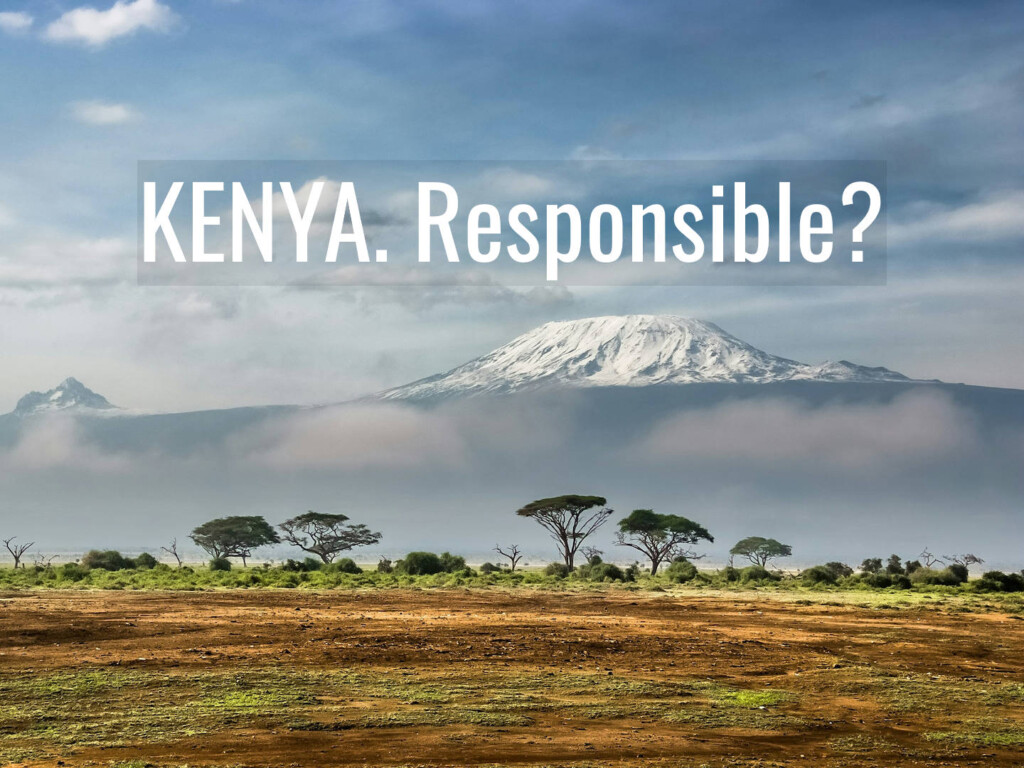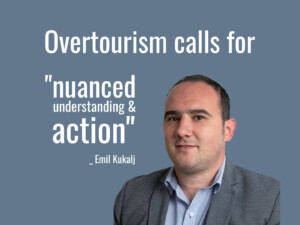Why aren’t Kenya tourism authorities taking a responsible approach to growth?

Tourism officer Doreen Nyamweya worries about the strategic direction of Kenya tourism. Ms Nyamweya wonders whether national tourism authorities are ‘imprisoned’ by outdated thinking, confused about Kenya’s position in the world, and disconnected from host communities.
It’s a “Good Tourism” Insight. (You too can write a “GT” Insight.)
With Kenya’s tourism sector booming again, calls for responsible approaches to tourism marketing and management are gaining momentum.
Different stakeholders in the industry are looking at the Kenya Tourism Board (KTB) to make the much-needed adjustments to integrate these approaches in their tourism growth and marketing strategy.
Contents
Kenya tourism is booming again
Positivity propelled the development of the most recent Kenyan tourism strategy.
Conclusions from the 2022 annual tourism sector performance report anticipated a consolidated tourism recovery in 2023 compared to 2019 levels. Then the UNWTO’s World Tourism Barometer showed the tourism sector on track to full recovery by closing 2023 at 87% of pre-pandemic levels.
In his remarks at the East Africa Regional Tourism Expo and Magical Kenya Travel Expo 2023 Dr Alfred Mutua, the Cabinet Secretary for Tourism and Wildlife, noted that Kenya is working to hit the 5.5 million threshold for annual tourist arrivals by 2028.
As marketing efforts intensify, these questions go unanswered:
- Why do we forget that for tourism to grow it must be responsibly managed?
- Why has Kenya not taken a responsible marketing approach to attract visitors?
Don’t miss other “Good Tourism” content about Africa
Kenya tourism’s focus on numbers may erode quality
For the past few decades, Kenya has invested a lot in marketing and branding campaigns.
This has escalated in the years since COVID-19.
However, recent tourism campaigns developed by the KTB, such as ‘You deserve a holiday’ and the November 2023 Beijing roadshow, are focused on attracting numbers, overlooking the planetary and prosperity aspects of responsible tourism.
Harold Goodwin’s WTM blog claims that many destination marketing organisations (DMOs) are imprisoned by the notion that tourism performance can only be measured in numbers. It also suggests that DMOs avoid communicating tourism impacts to tourists out of fear that it will turn tourists away.
While the unveiling of the ‘Visit East Africa- Feel the Vibe’ regional tourism brand was a great milestone for Kenya, with the other East African countries competing for a market share, Kenya’s strategies fall short of integrating sustainable and responsible tourism principles in their marketing communications.
Without effective marketing communication that reflects the story of the destination, it arouses no visitor curiosity or emotion around the moral responsibility of their travel practices. This may lead to an erosion in both expectation and quality.
Don’t miss other “GT” content tagged with ‘policy and governance’
Kenya tourism’s upmarket positioning may backfire
In Kenya’s 2021 – 2025 tourism strategy, giving the destination brand a facelift and repositioning was one of the key strategic initiatives for ‘sustainable’ growth.
The repositioning of Kenya’s tourism as an upmarket destination was much-anticipated. Kenya has witnessed fee hikes at various tourist destinations as a result. For instance, the Maasai Mara has tripled its entrance fees. National Museums of Kenya has followed suit.
However, this strategic shift may fail because it is based on price alone:
- The domestic market may suffer as attractions become unaffordable to Kenyans;
- Emerging youth segments may stay away for the same reason; and
- Those seeking correspondingly rich experiences may not be convinced.
Furthermore, the new Visit East Africa tourism campaign is enabling the East African Community to market the region as a whole. With the aforementioned higher fees, Kenya may not only fail to attract new consumer segments but also turn existing markets away.
Having positioned itself as a wildlife destination first and foremost — and a more expensive one — Kenya has failed to positively differentiate itself from its neighbours.
For instance, the existing Magical Kenya Signature Experiences are heavily biased towards bush experiences. Because of this, tourism products with Kenya’s unique culture and heritage at their core struggle to attract attention.
Regionalisation may boost visitors to and throughout East Africa as a whole. However, without a unique selling point that differentiates Kenya from her neighbours — and a diversified experiential product offering that moves away from the over-utilised wildlife product — tourism may decline for Kenya.
Don’t miss other “GT” content tagged with ‘marketing’
Kenya tourism developers’ dismissal of communities may cause crisis
This study from China shows how community exclusion is one of the reasons why tourism development plans fall through the cracks. There is a disconnect between tourism development goals and host community values.
Unfortunately, benefit-sharing ventures have become a hard bargain between investors and host communities in Kenya’s popular destinations. Host communities in Kenyan destinations are rarely involved in tourism development, thus they are not factored in as potential recipients of tourism benefits.
When it comes to sustainable tourism benefit schemes, host communities in Kenya are seeing unfavourable outcomes. There are several emerging stories about failed ecotourism ventures, especially in community conservancy areas such as the Shompole community.
Failure to address the disconnect and soured partnerships between tourism developers and host communities will only lead to a crisis in Kenya’s tourism industry.
Also read Edwin Magio’s “GT” Insight: ‘Africa must put communities, conservation at the centre of travel & tourism recovery’
What do you think?
Share your own thoughts about Kenya tourism strategy, policy, and governance in a comment below. (SIGN IN or REGISTER first. After signing in you will need to refresh this page to see the comments section.)
Or write a “GT” Insight or “GT” Insight Bite of your own. The “Good Tourism” Blog welcomes diversity of opinion and perspective about travel & tourism, because travel & tourism is everyone’s business.
“GT” doesn’t judge. “GT” publishes. “GT” is where free thought travels.
If you think the tourism media landscape is better with “GT” in it, then please …
About the author

Doreen Nyamweya, Tourism Officer in Nyamira County, Kenya, is a sustainable tourism specialist and a student and advocate of responsible tourism management.
Ms Nyamweya’s areas of expertise include tourism research, destination management, sustainability assessment, product development, and responsible tourism marketing.
You can connect with Doreen on LinkedIn.
Featured image (top of post)
Are Kenya tourism authorities as responsible as they could be? View of Mt Kilimanjaro from Amboseli National Park, Kenya. Pic by Sergey Pesterev (CC0) via Unsplash. “GT” cropped the image and added the words.





